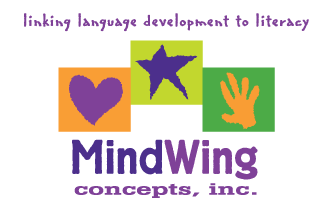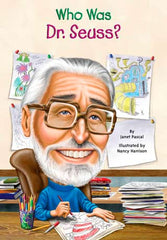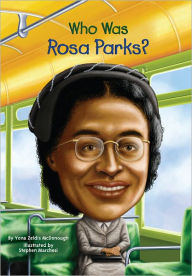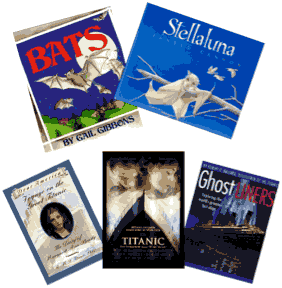Secure Checkout. FREE SHIPPING for Continental U.S. Orders over $60.
Menu
-
- Home
-
About Us
-
The Approach
-
Linking Language & Literacy
-
Professional Learning
-
Learning Resources
-
SHOP
-
Blog
-
- About MindWing
- Our People
- Contact Us
- Your Account
- Login
-
United States (USD $)

Secure Checkout. FREE SHIPPING for Continental U.S. Orders over $60.
MindWing Concepts Blog

3 Ways SGM® Bolsters the Role of Narrative Development in Collaboration
March 03, 2016

Orange County Public Schools
Orlando, Florida 2007
As a speech language pathologist, I am a member of two of American Speech, Language and Hearing Association’s (ASHA) Special Interest Groups: Divisions 1 & 16. Both relate to schools and to students who are having problems with language and literacy. It has long been my thought, as many of you know, that discourse level language skills, those that extend beyond the sentence as students strive to express personal stories, story retells and expression of content area knowledge, are oral language skills that are vital and foundational to academic learning and social success...

Read Across America Day & Dr. Seuss Lesson!
February 29, 2016
 As always, I began writing my lesson by gathering my focus book and Story Grammar Marker® Mini-Posters. Since the children enjoyed our recent Rosa Parks read aloud Who was Rosa Parks? written by Yona Zeldis McDonough, this week I chose Who Was Dr. Seuss? written by Janet B. Pascal from the same series. I planned the lesson to coincide with Read Across America Day on March 2, which is Dr. Seuss’ birthday. The lexile measure of this book is 820L. The following lesson suggestions were designed for grades 3 and 4. Lessons may be modified to meet your student’s needs. Many people ask how I go about creating lessons to use the SGM®. Really, it is the opposite thinking, as I always have asked myself: How can the SGM® be used to enhance the lessons I already do and target skills that I am trying to teach?...
As always, I began writing my lesson by gathering my focus book and Story Grammar Marker® Mini-Posters. Since the children enjoyed our recent Rosa Parks read aloud Who was Rosa Parks? written by Yona Zeldis McDonough, this week I chose Who Was Dr. Seuss? written by Janet B. Pascal from the same series. I planned the lesson to coincide with Read Across America Day on March 2, which is Dr. Seuss’ birthday. The lexile measure of this book is 820L. The following lesson suggestions were designed for grades 3 and 4. Lessons may be modified to meet your student’s needs. Many people ask how I go about creating lessons to use the SGM®. Really, it is the opposite thinking, as I always have asked myself: How can the SGM® be used to enhance the lessons I already do and target skills that I am trying to teach?...

“REACTIONS” on Facebook – New Emojis!
February 25, 2016
 Have you seen them? Have you used them yet? Do you like them? On Wednesday, Facebook launched new “REACTION” emojis in place of the “like” button. Below is an example of the new reaction emojis on our MindWing Concepts, Inc. FaceBook page.“We heard from people that they wanted more ways to express themselves on Facebook,” said Facebook product manager Sammi Krug. “When people come to Facebook, they share all kinds of different things, things that make them sad, things that make them happy, thought-provoking, angry. We kept hearing from people that they didn’t have a way to express empathy” (Chaykowski, 2016). This article went on to say that the ability to express empathy was very important to FaceBook CEO Mark Zuckerberg.
Have you seen them? Have you used them yet? Do you like them? On Wednesday, Facebook launched new “REACTION” emojis in place of the “like” button. Below is an example of the new reaction emojis on our MindWing Concepts, Inc. FaceBook page.“We heard from people that they wanted more ways to express themselves on Facebook,” said Facebook product manager Sammi Krug. “When people come to Facebook, they share all kinds of different things, things that make them sad, things that make them happy, thought-provoking, angry. We kept hearing from people that they didn’t have a way to express empathy” (Chaykowski, 2016). This article went on to say that the ability to express empathy was very important to FaceBook CEO Mark Zuckerberg.

Understanding Novels / Chapter Books with SGM — Part 5
February 23, 2016
 This next section of analysis of The Big Wave by Pearl Buck begins with personification of the sea and extends the overall themes of friendship, resilience, overcoming obstacles and gratitude leading to new beginnings. The Critical Thinking Triangle® and the Complete Episode maps of the Story Grammar Marker® assist students in qualitative analysis of the plot to form opinions and apply the themes to their own lives. Pages 15-22:Through personification, the sea is described as cruel and angry. These pages contain the steps leading up to the kick-off of the first major episode in the novel. The expandable Get Ready for the Kick-Off map from Talk to Write, Write to Learn manual would be useful here showing that there is evidence that something is happening...
This next section of analysis of The Big Wave by Pearl Buck begins with personification of the sea and extends the overall themes of friendship, resilience, overcoming obstacles and gratitude leading to new beginnings. The Critical Thinking Triangle® and the Complete Episode maps of the Story Grammar Marker® assist students in qualitative analysis of the plot to form opinions and apply the themes to their own lives. Pages 15-22:Through personification, the sea is described as cruel and angry. These pages contain the steps leading up to the kick-off of the first major episode in the novel. The expandable Get Ready for the Kick-Off map from Talk to Write, Write to Learn manual would be useful here showing that there is evidence that something is happening...

February is Black History Month — Lesson 3
February 19, 2016
 Having just read the biography Who Was Rosa Parks? written by Yona Zeldis McDonough, I gathered five of my favorite SGM Mini-Posters and sat down to create some lessons based upon this wonderful book for elementary school students. The blending of both narrative and expository text structures in this book makes it especially valuable to teach and reinforce the differences in text structures. It would make a wonderful informative read aloud as well as for use with individual student for reports and sharing. The Lexile measure is 700. The author includes two timelines, one showing Rosa Park’s life and the other corresponding to world events of the same years. This is especially helpful to relate to the setting of the biography...
Having just read the biography Who Was Rosa Parks? written by Yona Zeldis McDonough, I gathered five of my favorite SGM Mini-Posters and sat down to create some lessons based upon this wonderful book for elementary school students. The blending of both narrative and expository text structures in this book makes it especially valuable to teach and reinforce the differences in text structures. It would make a wonderful informative read aloud as well as for use with individual student for reports and sharing. The Lexile measure is 700. The author includes two timelines, one showing Rosa Park’s life and the other corresponding to world events of the same years. This is especially helpful to relate to the setting of the biography...
Blending Narrative and Expository Texts and Building Rigor
February 12, 2016 2 Comments
Black History Month Lesson 2
 A large focus for us this year is to share how to use Story Grammar Marker® methodology for both Narrative and Expository text selections. As a manner of best practice, Maryellen Moreau, creator of the Story Grammar Marker® has always paired narrative and expository texts together in her workshops. Camp (2000) introduced a concept called “twin texts” describing a way to pair books together. “Twin texts” are two books, one fiction and one non-fiction that are presented together in a lesson to get children excited about learning and activate prior knowledge. “Teachers can integrate language arts, science, social studies, and other content areas by using children’s literature as a bridge” (Camp, 2000, p. 400). This pairing of twin texts...
A large focus for us this year is to share how to use Story Grammar Marker® methodology for both Narrative and Expository text selections. As a manner of best practice, Maryellen Moreau, creator of the Story Grammar Marker® has always paired narrative and expository texts together in her workshops. Camp (2000) introduced a concept called “twin texts” describing a way to pair books together. “Twin texts” are two books, one fiction and one non-fiction that are presented together in a lesson to get children excited about learning and activate prior knowledge. “Teachers can integrate language arts, science, social studies, and other content areas by using children’s literature as a bridge” (Camp, 2000, p. 400). This pairing of twin texts...
